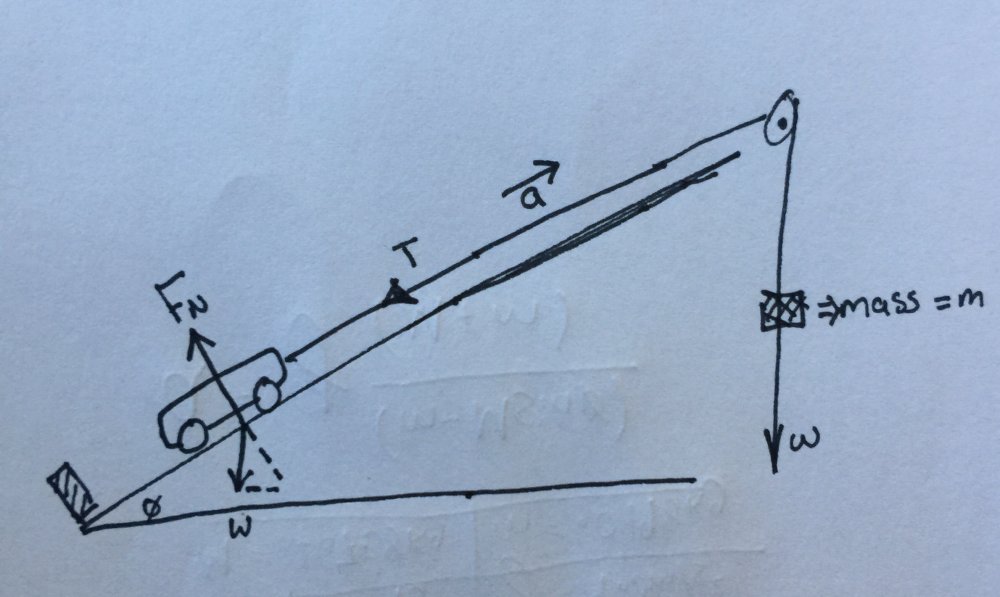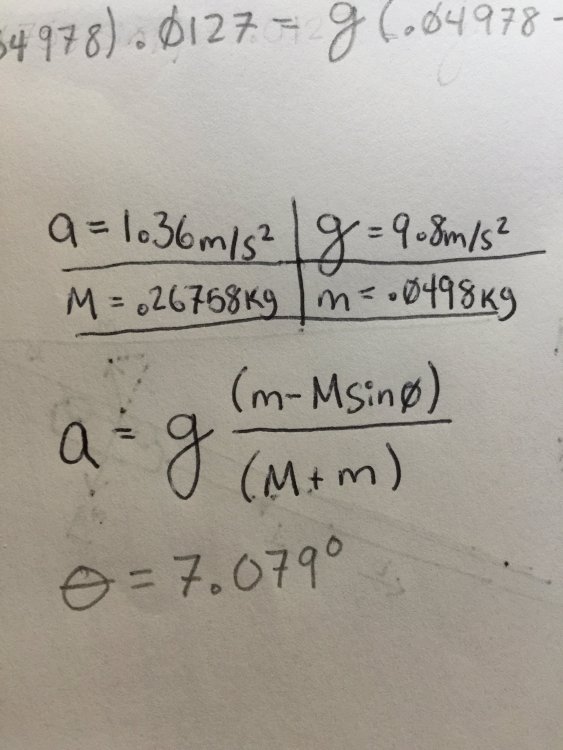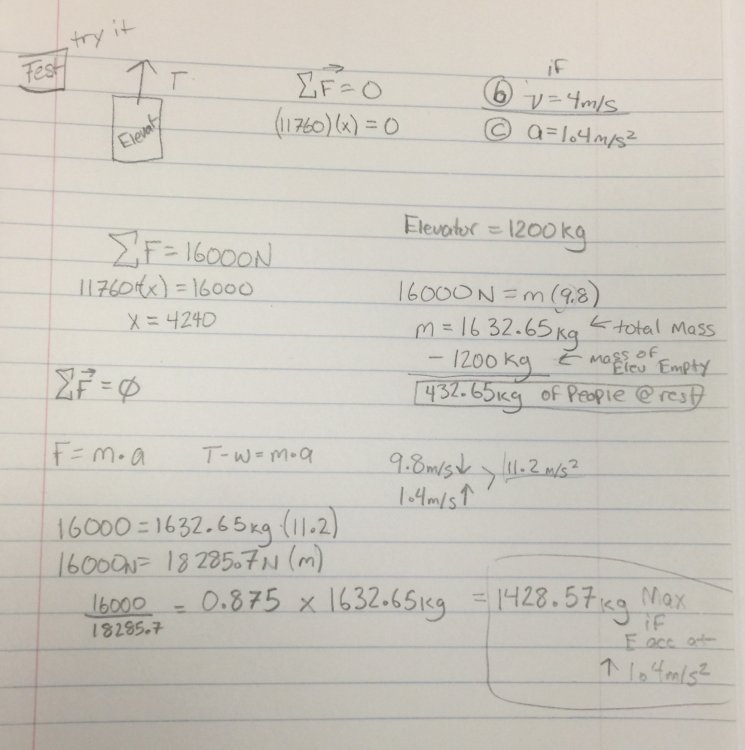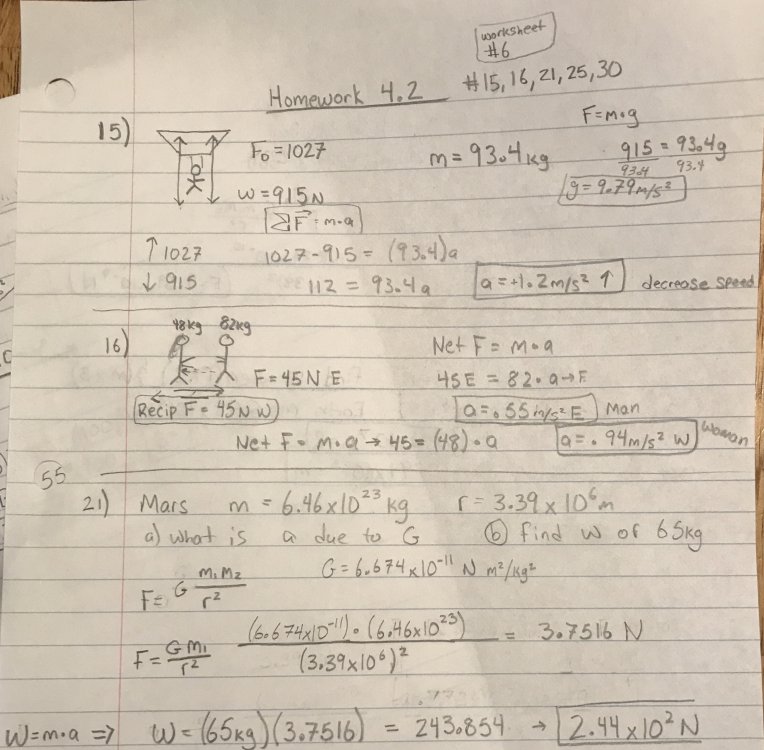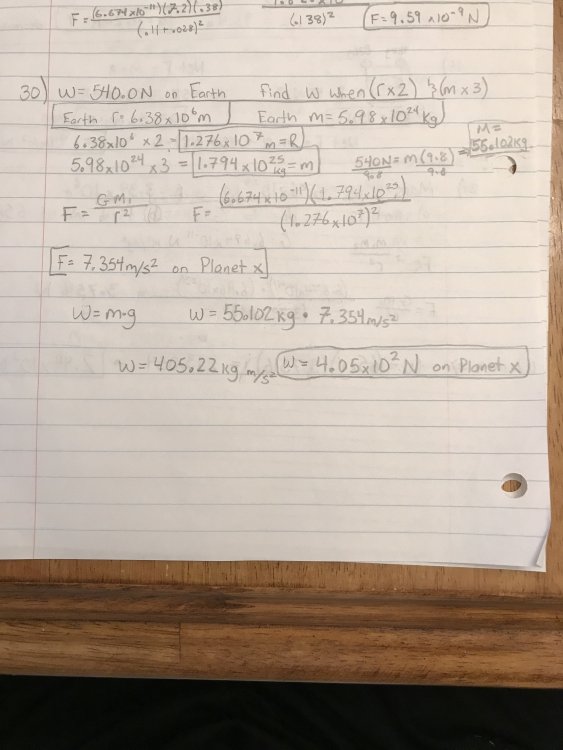-
Posts
51 -
Joined
-
Last visited
About FrankP
- Birthday 02/04/1991
Profile Information
-
Location
New Jersey
-
Interests
Basically Everything and anything
-
College Major/Degree
Biology
-
Favorite Area of Science
Physics, Bio, Chemistry, Sports
-
Occupation
Student & Personal Trainer
Recent Profile Visitors
4936 profile views
FrankP's Achievements

Meson (3/13)
2
Reputation
-
Ok so this is not my strong subject however I need to understand it in order to write this one part of a neuroscience paper. I have been doing a lot of reading online and I have very finite notes on the subject and want to understand it a little better so I don't butcher it. So Magnocells are responsible for the rapid adaptation of the eye. I don't understand why or how. My notes state that they are responsible for a large receptive field is this why they are rapidly adapting because of the size of the receptive field if they were constantly responding they would require too much room in the cortex to process the visual information? Additionally I am not quite sure the process biochemically of how the adaptation works. Is it inhibitory neurotransmitters that prevent the Magnocells from continuing to fire the entire duration of the stimulus or is it the fact that the neurotransmitters only transmit at a action potential and the continued stimulus is a graded potential that does not reach the required threshold to cause firing? Lastly, in the sematosensory system I understand that the Meissner and Pacinian corpuscles are the ones that adapt to continuous pressure. My question is identical to the visual one, why and how? I understand that touch is something we adapt to and I know that because my teacher stated that the example of you can not feel your socks on your feet while you sit perfectly still however if you move in the slightest you can feel them again. I can fully wrap my head around such an example but I need neuroscience terminology so that I can look it up and understand it better because I am trying to write very specifically how this process/ system works. I understand that Meissners detects movement across the skin and so when there is no movement across the skin (such as sock) there is no firing of those neurons. I do understand vaguely how pacinian corpuscles adapt because of the anatomy of the end organ. Since it is layered with viscous solution between those layers the pressure that compresses the end organ is then resisted by the pacinian corepuscle itself and begins to ignore the stimulus. Why do both of these organs do this? I know this might be complicated to explain I don't need to write a dissertation however i just need helpful hints, descriptions or whatever in order to help me figure out what to read. I have read the book for the class and I am not really getting any more clarification.
-

Why do we have to write so many highschool papers?
FrankP replied to Jingori's topic in Homework Help
In my opinion is that ones ability to compose thoughts collectively and cohesively on paper reflect their ability to think. Progressive education tells us we should be good at a multitude of skills which may not have equal value to everyone. However, if you were never exposed to said subjects you may not find what interests you. So for me I was a kid in high school who got good grades by virtue of sheer ability. I did what was needed to pass and that’s as far as that went. I literally got A-‘s and B+’s without doing anything and was considered lazy. Mind you that this occurred in one of the most competitive areas in the US education system. Now at 26 years old, i’m back in college milking the education system for everything they have. Moreover, what Interests you now will likely change, and when that happens having a diverse educational background will pay dividends. Think of it as having a Batman utility belt of scholastic skills. They will all come in handy at some point in time. But in the short term, dissecting each assignment based on translatability In your day to day is too close minded. Most daily activities would be rendered moot with such logic anyway. -
The calculator is in the proper mode I checked that first. Something is wrong with the math not the calculator I am just not able to figure out what is wrong with the math hence my inquiry. I have asked my lab teacher as well who does not respond to emails so as expected 2 weeks no response.
-
Hello so I am having an issue with rectifying the math for this problem. I have the answer that my teacher gave me which is the answer specific to my lab but on my own I can not prove the math to be correct. I actually cant even get a number at all my calculator is giving me a constant error. Background on the problem: Car attached to a string with a mass suspended on it passes through a photo-gate connected to a smart timer which reads the acceleration. These trials are performed on an incline ramp which has an unknown angle of incline. This is the problem we want to figure out besides tension and all that we want to determine what the angle of the incline is based on the information given. I have worked this math more than 20 times and I have yet to get a single answer. I am going to send a picture of the equation I am supposed to be using as well as the number that the angle is supposed to work out to be. a = acceleration (average) M = mass of car with string m = mass suspended on end of string g = gravity (standard 9.8) thank you guys in advance I cant figure why this is giving me issues.
-
Woah I was reading over this post and thought I saw it get a little intense here but then I realized you were actually helping! haha Ill just keep reading quietly in the background
-

Just took a test can't figure out how to solve (Elevator Physics Problem)
FrankP replied to FrankP's topic in Homework Help
Ok so when I redid the problem today I realized that all along I had 228 as my answer I just never subtracted from the mass of the elevator. So technically the math checks out I guess I hope that is what I got on the test because now I can't remember but one can only hope... For the future though I do appreciate the help as I know this is only the beginning of elevator problems and more advanced vector based problems so I do appreciate it. -

Just took a test can't figure out how to solve (Elevator Physics Problem)
FrankP replied to FrankP's topic in Homework Help
Interesting how you worked out the problem i’m going to have to try this again tomorrow now that I saw the comments! Thanks for the help I wish I had a good example like this to work on before taking the test lol -

Just took a test can't figure out how to solve (Elevator Physics Problem)
FrankP replied to FrankP's topic in Homework Help
Ok so I am going to basically work backwards with your numbers to try and rectify the math because I know I am going to need to be able to do this on my own going forward. Thank you again -
Ok so so far I have not struggled with the elevator problems however, the one on the test I was a little off in my method and couldn't get the answer. The question is something like: An elevator has a cable with the max force of 16,000N, the mass of the elevator is 1200kg (a)what is the maximum mass of the passengers if the elevator is at rest (this part I got, I think)? (b) What is the max capacity if the elevator is moving at a constant v of 4m/s (c) what is the max capacity if the elevator is accelerating up at 1.4m/s^2? I got the same answer for (a) & (b) which was approximately 435kg for (c) I got something like .85 which I then multiplied by the 1635kg I got for part a and b and got something ~1390kg or ~1400kg when the elevator is accelerating up. What did I do wrong? Edit: I replicated my work just now on a scrap paper. I just attached it I skipped (b) because I got the same answer when I did it in class so if I am wrong (which i'm at least 70% sure I am) I would like to know if someone can explain to me where I went wrong.
-

Homework problems with Newton’s laws and force
FrankP replied to FrankP's topic in Classical Physics
Thank you for the help my homework ended up being right now time to prepare for the test! haha -

Homework problems with Newton’s laws and force
FrankP replied to FrankP's topic in Classical Physics
Ok was able to get an answer which would seem to be correct logically however the only question I have is why is the answer to part one considered to acceleration force of g on mars and not the force? The book states a=3.75m/s^2 I got F=3.75N in the future should I become conditioned to understand that this will be the gravitational force in m/s^2 as opposed to N? -

Homework problems with Newton’s laws and force
FrankP replied to FrankP's topic in Classical Physics
Ok as soon as I get home I’ll post my work and see if I have the right methods thank you guys I figured I was overthinking the problem because I have not had issues with the math or logic yet... so usually it’s just me making things harder on myself I appreciate it -

Homework problems with Newton’s laws and force
FrankP replied to FrankP's topic in Classical Physics
The F=G(m1*m2/r^2) equation? Yea I have learned by that but struggling to understand the application here because doesn’t that determine the force of attraction of two objects with specific masses? In example 21 what is the dummy mass that I would use to calculate the force of attraction initially? I could do it for tomorrow the 65kg person but part one I can’t figure it out. And for 30 I looked up the question on google first and it appears they are arbitrary calculations so it doesn’t help me. Thanks again -
Ok so I have not really had any problems with the homework and or sample problems to date, however this homework assignment my teacher has struggled to explain to us for whatever reason so my notes are very all over the place. This homework is not graded however it serves as our test review which will be on Monday so I want to figure this out ASAP so I can begin to practice them. Using the formulas that I currently have I would not be able to solve this unless I’m overlooking something. Thank you in advance. P.S. there should be 2 images attached
-
Ok I will check to see if I can find anything online as it pertains to general chromatography first. I actually forgot that TLC is only one aspect of Chromatography, since it is the only form we use at my school. Thank you I appreciate it



